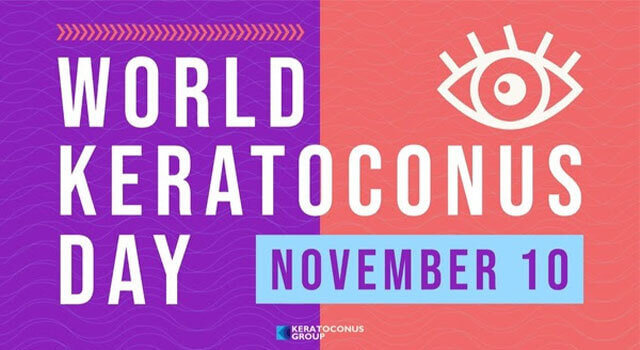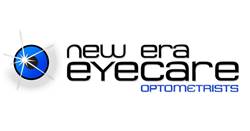 World Keratoconus Day is dedicated to raising awareness about keratoconus (KC), as well as educating and advocating for those living with keratoconus and ectatic corneal disorders.
World Keratoconus Day is dedicated to raising awareness about keratoconus (KC), as well as educating and advocating for those living with keratoconus and ectatic corneal disorders.
Keratoconus, or KC, is a degenerative non-inflammatory eye condition affecting the cornea. In KC, the cornea, which is normally dome-shaped, gradually becomes thinner and bulges out as it begins to assume a cone shape.
Keratoconus tends to develop during the early teens, with mild symptoms. As the disease progresses, the cornea's shape changes to a point where wearing regular contact lenses is no longer an option and eyeglasses cannot fully correct one's vision.
Fortunately, with the right contact lenses, those with keratoconus can once again see the world clearly and comfortably.
Keratoconus and Contact Lenses
In its early stages, people with keratoconus can usually wear glasses or standard soft contact lenses to correct resulting astigmatism and improve clarity. As the condition progresses, however, your eye doctor will prescribe the most suitable contact lens to accommodate a cone-shaped cornea to provide you with the clearest vision possible.
There are a variety of contact lens options for keratoconus, all of which depend on the severity of the condition.
1. Soft Toric Lenses
Astigmatism can be corrected with soft toric lenses, a comfortable and effective solution during the early stages of KC. However, this may not be a good treatment option as the condition worsens.
2. Custom Soft Contact Lenses
Custom soft contacts are an improvement over soft toric lenses since they are designed to match the exact contour of your cornea. Soft contact lenses can be custom-made for KC patients and may eliminate the need for glasses by fully correcting astigmatism.
3. Gas Permeable Contact Lenses
Gas permeable contact lenses (hard lenses) allow more oxygen into the eye than standard soft lenses. A gas permeable lens has a somewhat different shape than soft contact lens alternatives, as it rests on the cornea, and because the lens is hard, it creates a new optical surface. These lenses are suitable for people with moderate KC.
4. Hybrid Contact Lenses
These lenses are a cross between hard and soft lenses. The hard center provides a flat surface, which helps alleviate the issues associated with a misshapen KC cornea. The lens is rendered more comfortable by the soft outer ring. Hybrids combine the convenience and comfort of soft lenses with the crisp, clear vision of rigid gas permeable contacts.
5. Scleral Lenses
Scleral lenses are larger than standard hybrid, gas permeable or custom soft contact lenses. They vault over the cornea and rest on the sclera, the white of the eye. The advantage of scleral lenses is that they do not sit on the cornea, which removes any rubbing and irritation on the corneal bulge. This reduces the risk of corneal injury from the contact lens.
Furthermore, as the scleral lens vaults above the cornea, the reservoir of pure saline solution between the underside of the lens and the front of the cornea keeps the eye in a liquid environment at all times. This enables the eye to receive an abundance of oxygen.
While both rigid gas permeable (GP) and scleral lenses deliver enough oxygen to the eyes, scleral lenses provide more comfort and better stability than regular GP lenses. For this reason, scleral contact lenses are a very successful option for people with keratoconus and irregularly shaped corneas.
Treatment for Keratoconus
We offer treatment for keratoconus that is tailored to each patient based on the severity and progression of the condition, as well as the patient's lifestyle.
Contact New Era Eyecare to learn more about scleral lenses and to discover ways we can help you manage your keratoconus.
Q: For how many hours can scleral lenses safely be worn in a day?
- A: Scleral lenses can be worn for 12-14 hours per day. To preserve the greatest possible vision and comfort, some patients may need to remove the lenses, clean them, and reapply fresh saline several times a day.
Q: Can scleral lenses completely correct my vision?
- A: Scleral lenses hide abnormalities on the eye's surface and may improve vision over other types of correction. However, you’ll probably need to wear glasses over the lenses to see clearly at all distances, particularly if you're over 40 and require reading glasses for close work.
New Era Eyecare provides scleral lenses to patients from Clifton, Arlington, Sterling, and Alexandria, Virginia and surrounding communities.
